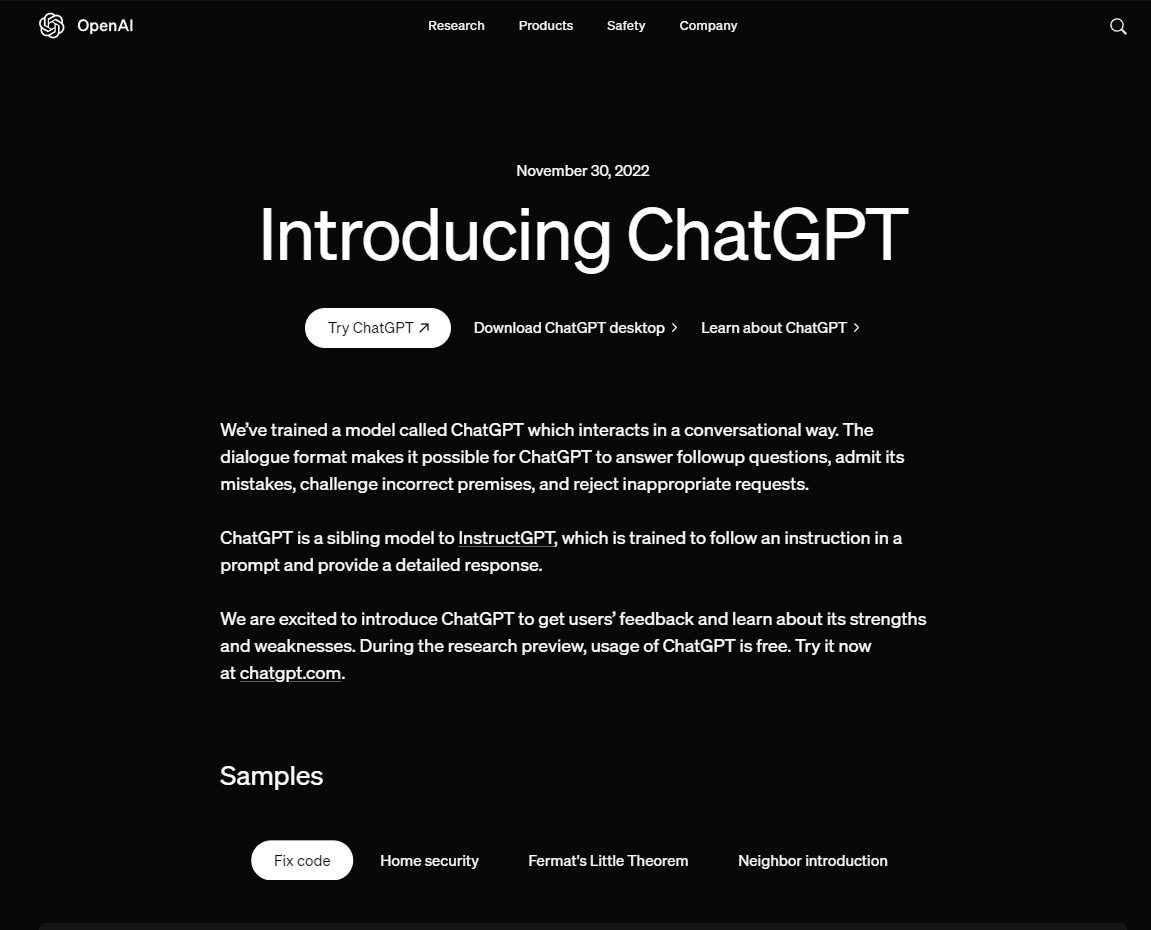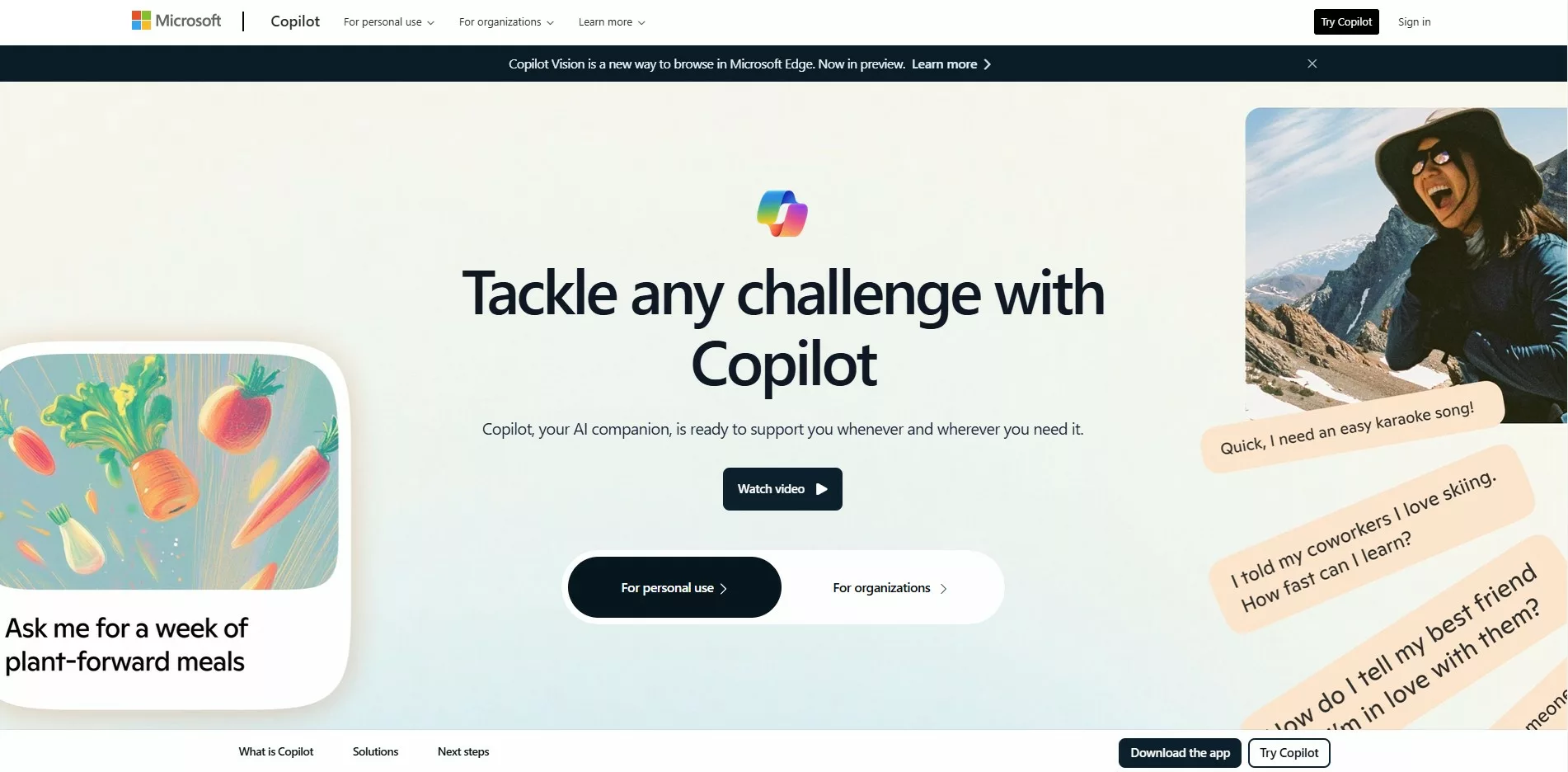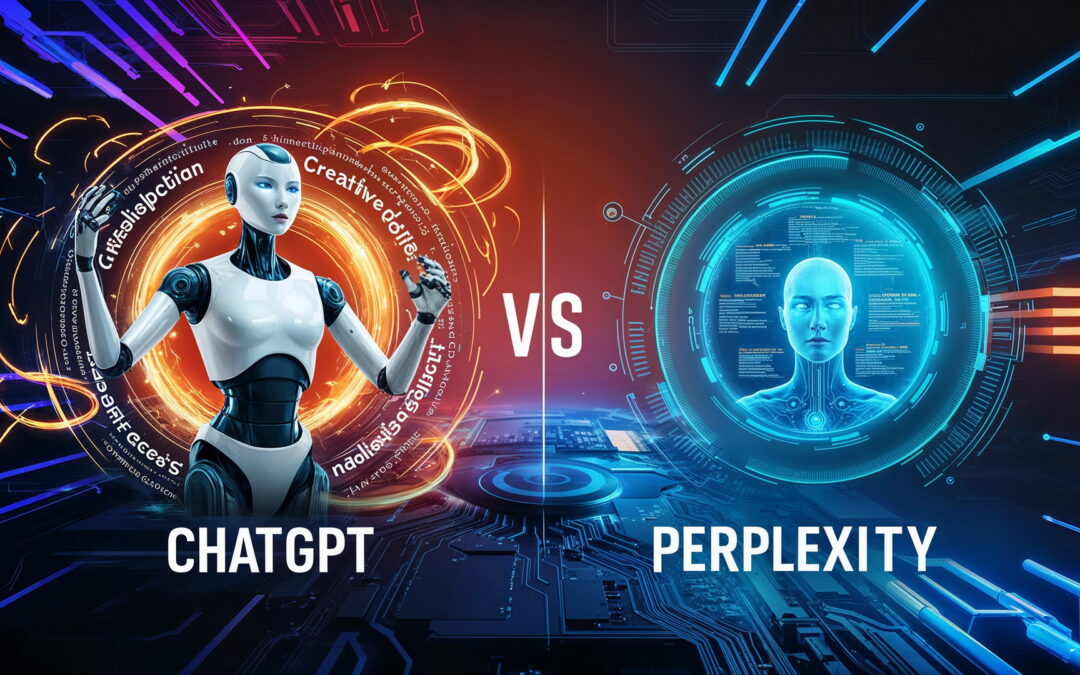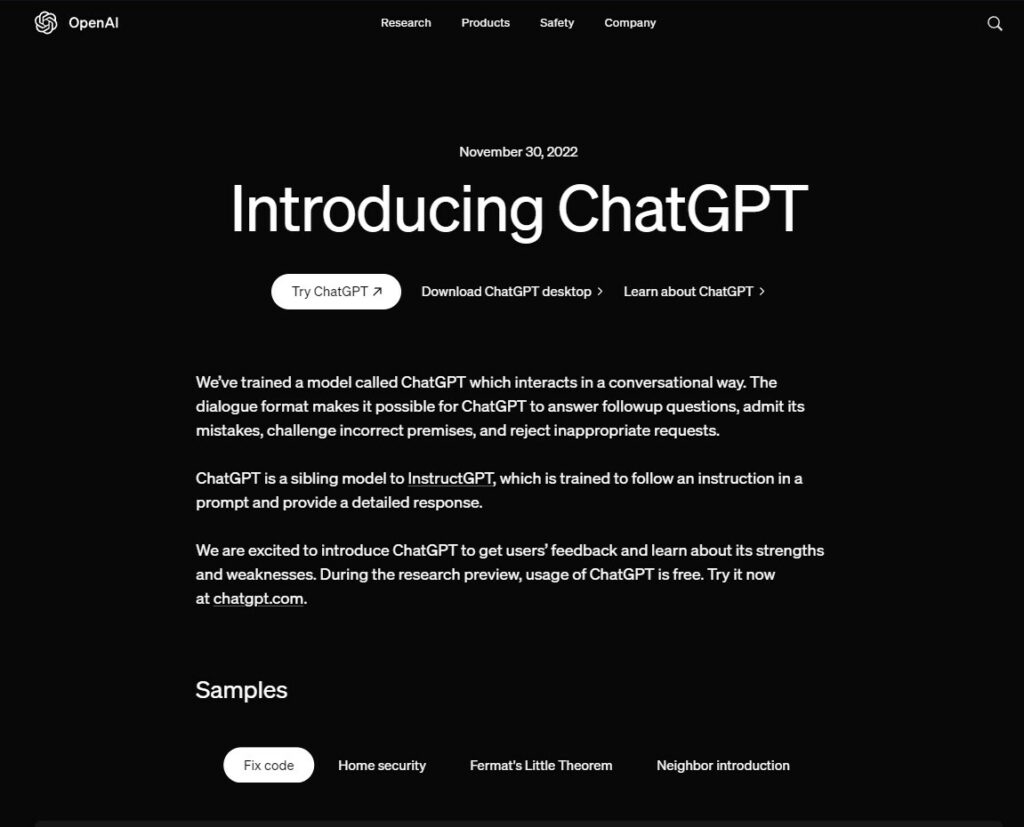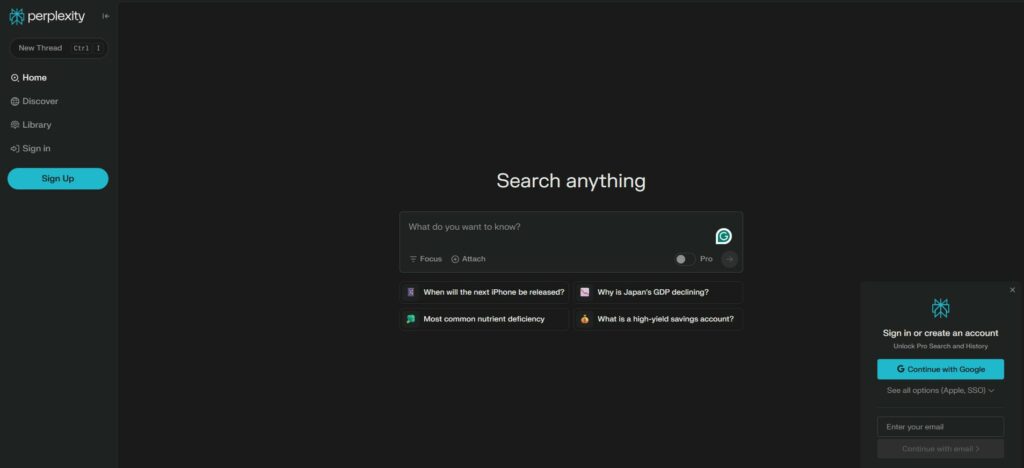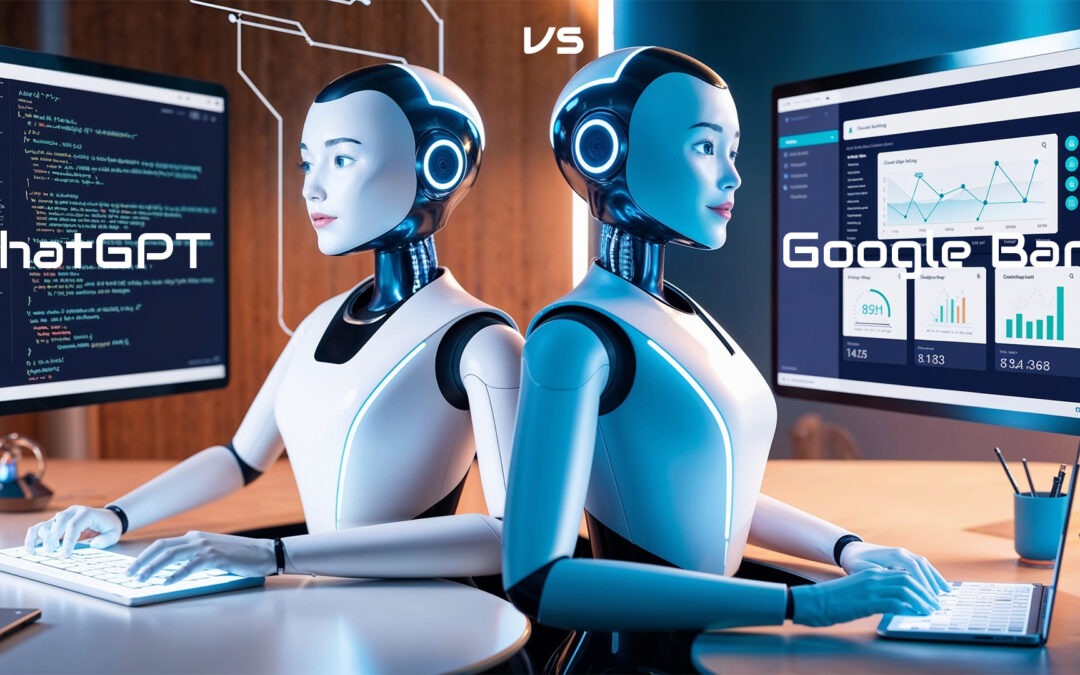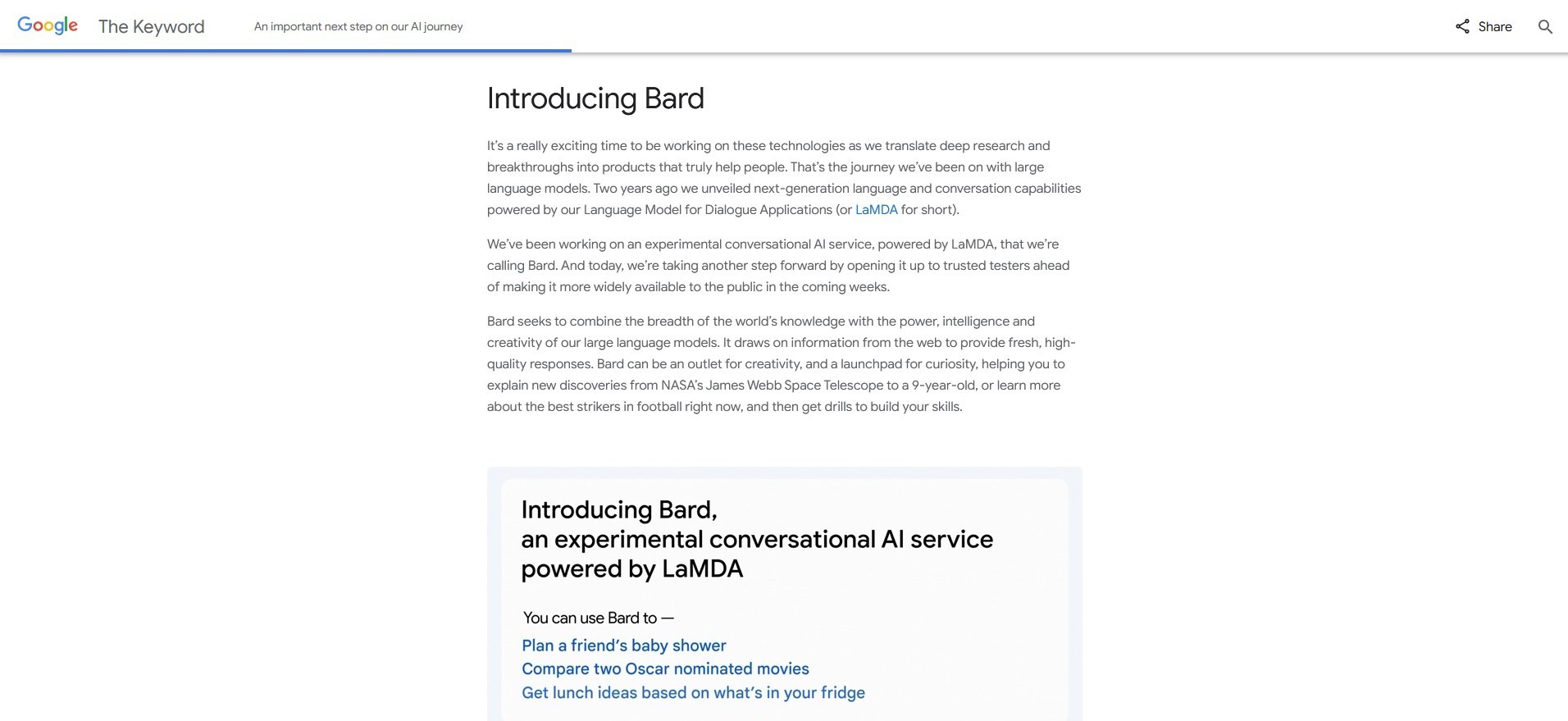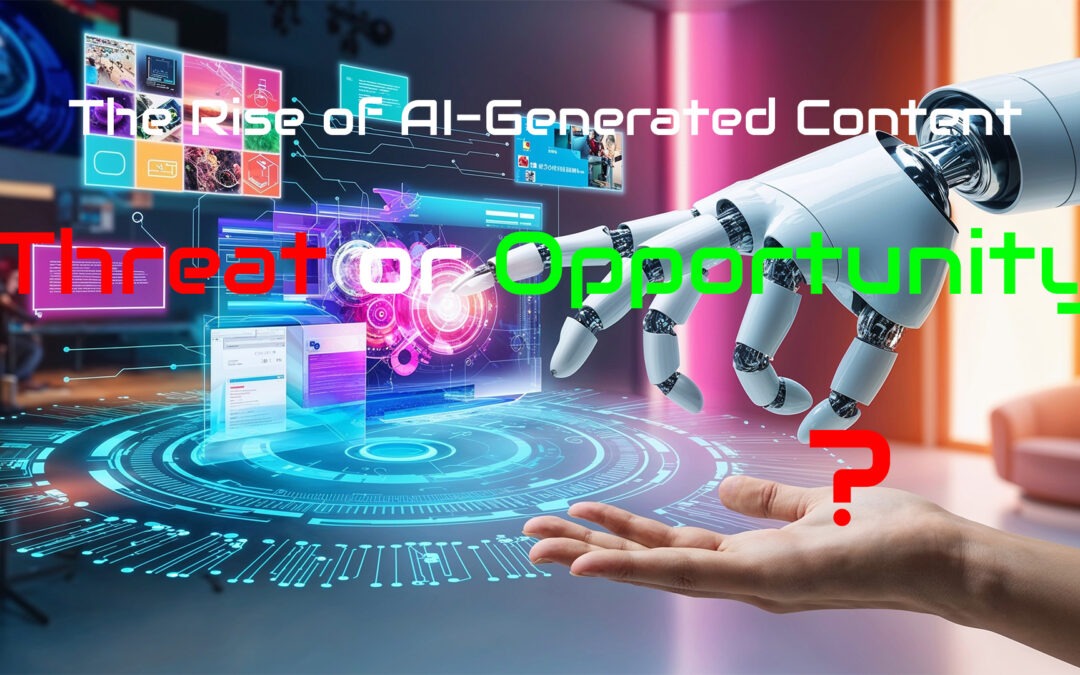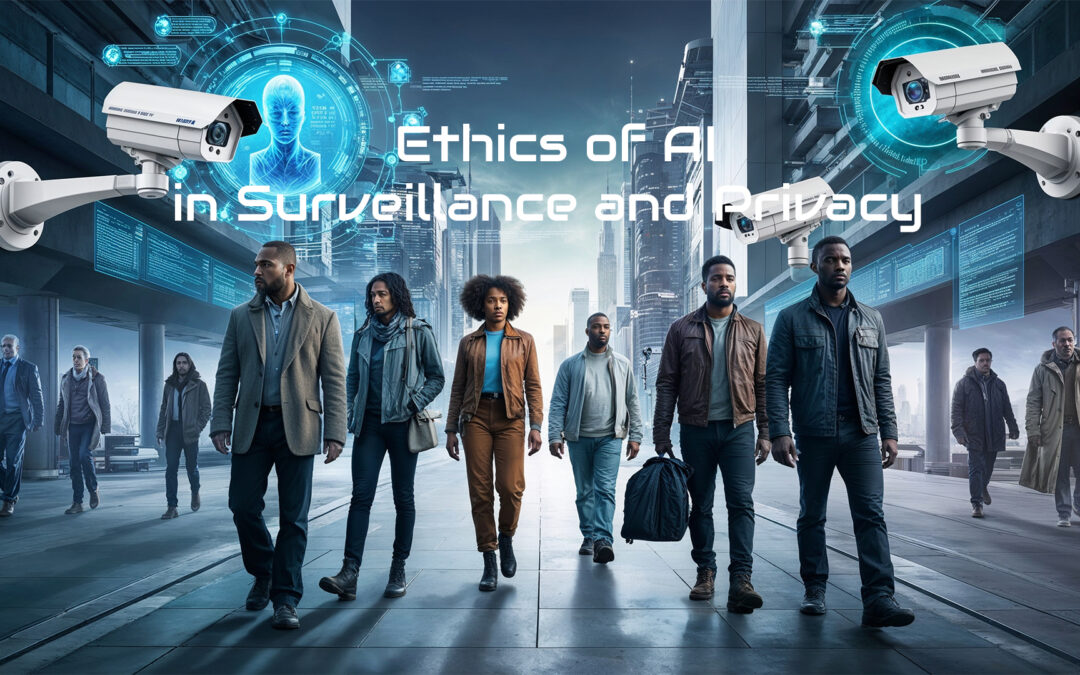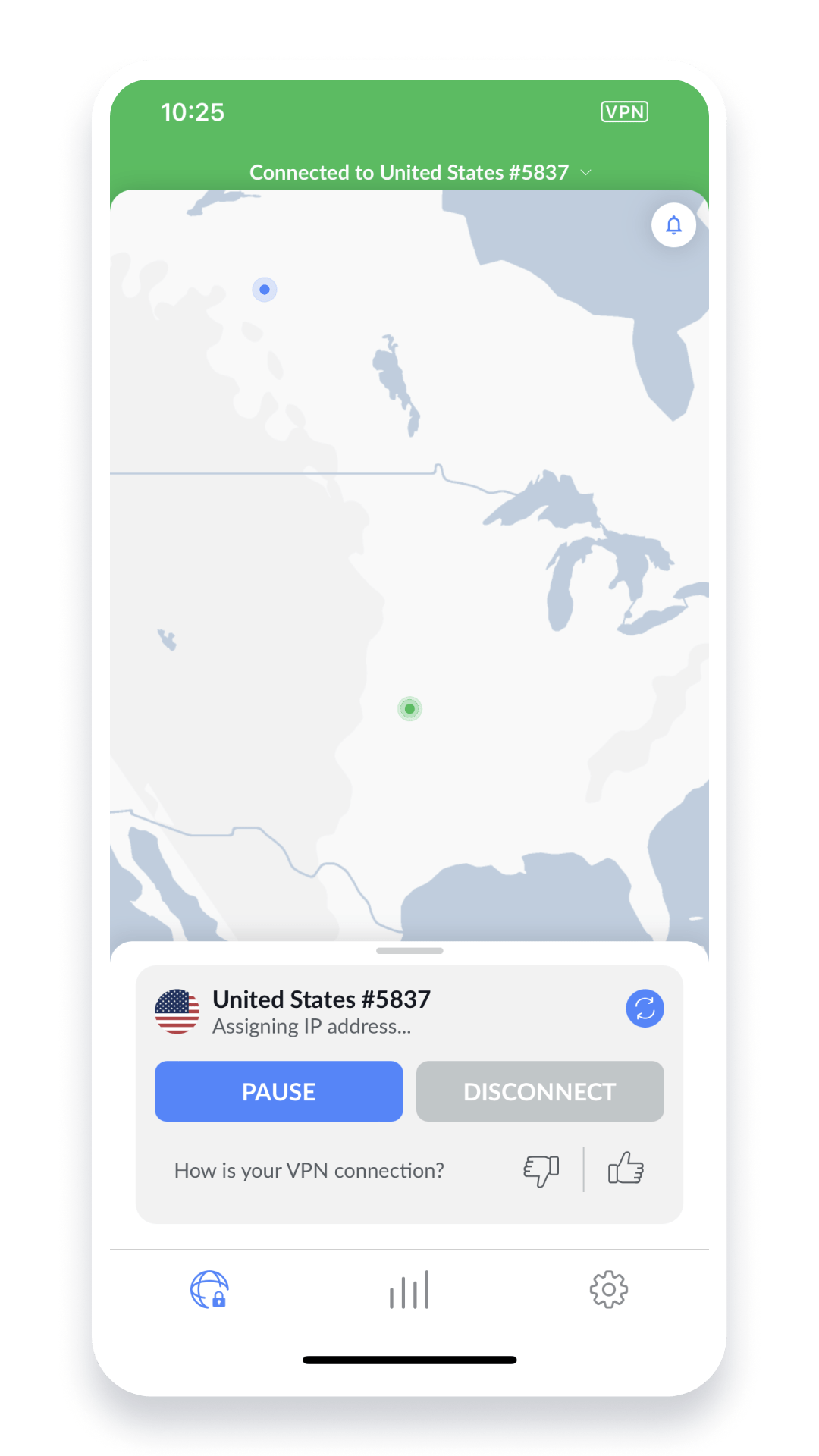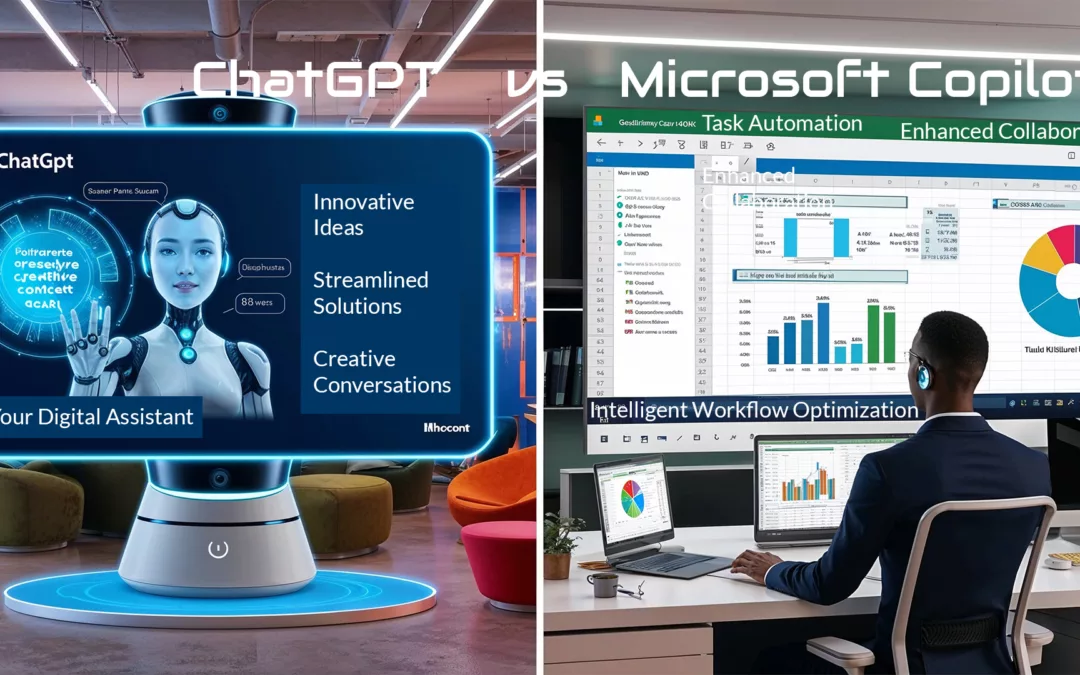
ChatGPT vs Microsoft Copilot: The Ultimate Productivity Battle in 2024
Introduction: ChatGPT vs Microsoft Copilot
Artificial Intelligence has redefined how we approach workplace productivity, efficiency, and innovation. Two giants in this space, ChatGPT by OpenAI and Microsoft Copilot, are empowering users with groundbreaking tools. But how do these platforms differ?
Let’s examine the functionalities, strengths, and potential drawbacks to determine which best suits your needs.
Overview of ChatGPT and Microsoft Copilot
ChatGPT: Revolutionizing Conversational AI
ChatGPT is a state-of-the-art language model developed by OpenAI. It excels at generating human-like text, assisting in drafting emails, creating content, brainstorming ideas, and answering complex questions.
ChatGPT is tailored for versatility, offering solutions across various industries, from customer support to software development.
Key Features:
- Natural language understanding and generation.
- API integration for custom applications.
- Ability to adapt across industries.
Notable Use Cases:
- Content creation and editing.
- Automated customer service.
- Coding assistance.
Microsoft Copilot: Redefining Productivity Within Ecosystems
Microsoft Copilot is deeply integrated into Microsoft’s ecosystem, including Office 365 and Teams. It’s designed to streamline tasks such as generating documents, analyzing data, and enhancing collaboration through AI-driven recommendations.
Key Features:
- Integration with Microsoft 365 applications.
- Advanced data analysis in Excel and Power BI.
- Team collaboration enhancements via Teams.
Notable Use Cases:
- Automating repetitive tasks in Word and Excel.
- Boosting collaboration in Teams.
- Creating detailed reports and presentations.
Key Differences Between ChatGPT and Microsoft Copilot
1. Integration and Ecosystem
ChatGPT functions as a standalone platform or API, enabling it to integrate into diverse workflows. In contrast, Microsoft Copilot thrives within the Microsoft ecosystem, making it ideal for users already utilizing Office 365 applications.
2. Capabilities and Focus Areas
While ChatGPT emphasizes natural language generation and flexibility, Microsoft Copilot focuses on task-specific productivity, such as drafting documents, analyzing spreadsheets, and enhancing team collaboration.
3. Customizability
ChatGPT offers extensive customization options for developers, allowing tailored solutions. Microsoft Copilot’s customization is limited to its existing suite of tools, focusing primarily on enhancing Microsoft’s ecosystem.
4. Learning Curve
ChatGPT requires some technical knowledge for integration into workflows, while Microsoft Copilot’s familiarity with Office tools makes it more accessible to everyday users.
5. Pricing Models
ChatGPT follows a subscription-based model with free and premium tiers. Microsoft Copilot’s pricing is typically bundled with Office 365, which might be cost-effective for enterprise users but less so for individuals.
Comparing Strengths and Weaknesses
Strengths of ChatGPT:
- Superior in generating conversational and creative content.
- Cross-industry applications.
- Extensive developer support.
Weaknesses of ChatGPT:
- Limited integration with enterprise software.
- Requires technical expertise for advanced customization.
Strengths of Microsoft Copilot:
- Seamless integration with Microsoft Office Suite.
- Strong productivity features for businesses.
- User-friendly for non-technical users.
Weaknesses of Microsoft Copilot:
- Restricted to Microsoft’s ecosystem.
- Limited scope outside productivity tasks.
FAQs – ChatGPT vs Microsoft Copilot
1. What is the primary difference between ChatGPT and Microsoft Copilot?
A.: ChatGPT focuses on conversational AI and flexibility, while Microsoft Copilot emphasizes productivity within Microsoft’s ecosystem.
2. Which tool is better for content creation?
A.: ChatGPT is superior for generating creative and conversational content.
3. Can Microsoft Copilot work without Office 365?
No, Microsoft Copilot is tightly integrated into the Office 365 ecosystem.
4. Is ChatGPT free to use?
ChatGPT offers both free and premium plans, depending on usage and features.
5. Does ChatGPT support coding?
Yes, ChatGPT can assist with coding by generating scripts and debugging code.
6. Which tool is better for team collaboration?
Microsoft Copilot is more effective for team collaboration through Teams integration.
7. Can ChatGPT analyze data like Microsoft Copilot?
ChatGPT has basic data analysis capabilities but lacks the advanced analytics of Copilot in Excel and Power BI.
8. Are both tools suitable for enterprises?
Yes, both tools have enterprise applications but cater to different needs—Copilot for Office productivity and ChatGPT for diverse workflows.
9. Which is more affordable for individuals?
ChatGPT’s free plan makes it more accessible to individual users than Copilot’s Office 365 subscription.
10. Can I use both tools simultaneously?
Yes, using both can maximize productivity by leveraging their unique strengths.
Conclusion and Summary – ChatGPT vs Microsoft Copilot
ChatGPT and Microsoft Copilot represent two distinct approaches to leveraging AI for productivity. ChatGPT’s versatility makes it a powerhouse for content creation, coding, and customer support, while Microsoft Copilot shines in task-specific productivity within the Office ecosystem. Selecting the right tool depends on your needs—opt for ChatGPT if flexibility and creativity are your priorities, or choose Microsoft Copilot if you’re heavily invested in the Microsoft ecosystem. Both tools embody the future of AI-driven work environments, making them invaluable assets for individuals and businesses alike.
This article is part of the AI Tools Comparison Series (Revolutionizing AI: Top Tools and Trends, it can be found here: Definitive Guide to Brilliant Emerging Technologies in the 21st Century).
For a brief comparison on the subject, see my previous post, ChatGPT vs. 11 Powerful AI Tools: Unlock Their Unique Features in 2024.
Thanks for reading.
Resources – ChatGPT vs Microsoft Copilot
- Get Started with ChatGPT ⬈ — Discover its features, pricing, and applications.
- Learn More About Microsoft Copilot ⬈ — Get details on its integrations and capabilities.
ℹ️ note: Due to the ongoing development of applications and websites, the actual appearance of the websites shown may differ from the images shown here.

